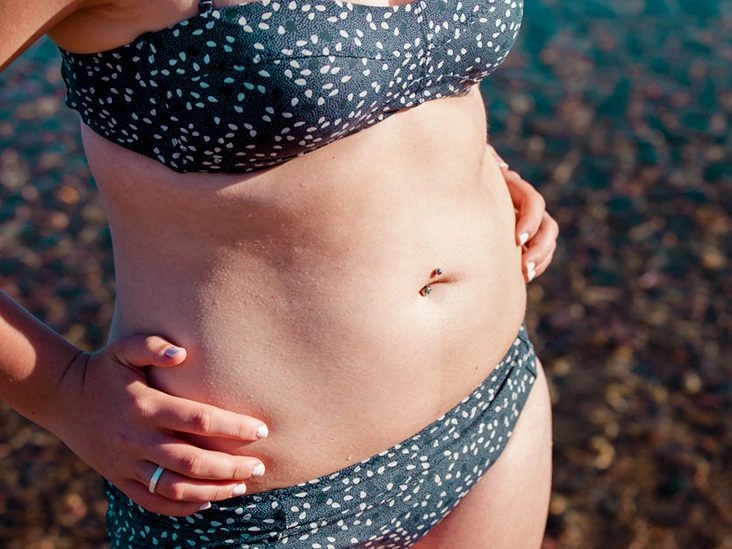Your navel is a scar left where the umbilical cord once connected you to your mother. How that area healed after the cord fell off determines the final look of your belly button.
Although a belly button isn’t quite as distinctive as a fingerprint, there are still many varieties. The primary classification is whether the navel is an innie or an outie.
An innie belly button appears as a small depression on the abdomen. An outie belly button looks as if a tiny knot or bump is protruding from the stomach.
Is your innie or outie the product of a particular cause or just chance? Read on to learn more about how your belly button shape developed and what options exist if you’re unhappy with it.

What determines whether you have an outie or an innie?
Innie navels are far more common than outies. In many cases, whether someone has an outie is simply down to chance. However, there are some exceptions. Certain medical conditions affecting the navel area raise the likelihood of an outie.
Medical issues that can produce an outie
Umbilical hernia
One cause is an umbilical hernia, in which the muscles around the navel don’t develop normally. This creates a weakness in the abdominal wall that can allow intestinal tissue to push outward and press against the belly button.
Although this condition usually isn’t painful for infants, it can lead to complications later, so physicians commonly correct it surgically.
Umbilical granuloma
Another cause is an umbilical granuloma, where excess tissue grows around the stump of the navel. This extra tissue can exert pressure on the area, causing the belly button to protrude.
Doctors typically treat granulomas with topical measures to reduce the extra tissue. Adults can also develop umbilical granulomas, particularly after navel piercings.
Belly buttons that change in adulthood
Some medical conditions can alter the appearance of the navel later in life. These are often due to underlying problems that increase pressure on the abdomen and make an innie look like an outie. Examples include:
- Ascites: accumulation of fluid in the peritoneal cavity, often from liver or kidney disorders
- Hepatosplenomegaly: enlargement of the liver and spleen
- Pregnancy: the growing uterus can push the navel outward
In most cases, when the underlying issue resolves, the belly button will return to its previous innie appearance.
Can you alter your belly button’s shape?
The way your belly button looks doesn’t affect your overall health. Still, many people opt for surgical correction after abdominal operations or simply because they dislike how their navel looks.
Surgeons refer to procedures that reshape the navel as umbilicoplasty. This surgery can be performed alone or as part of other cosmetic abdominal procedures, such as a tummy tuck (abdominoplasty).
What the surgery involves
Umbilicoplasty is often done under local anesthesia, meaning the area around the navel is numbed so you don’t feel the operation. Surgeons make several small incisions and suture selected areas to fashion a new navel shape.
Because it’s generally a minor operation, recovery time is limited and long-term complications are uncommon. Potential risks include infection, necrosis if skin blood supply is compromised, and dissatisfaction with scar appearance.
Key takeaways
Belly buttons are essentially a scar on the abdominal wall where your umbilical cord was attached.
Whether you have an innie or an outie doesn’t reflect your health. If you’re unhappy with the look of your navel—or you lack one due to prior surgery or childhood conditions—you can consult a plastic surgeon about umbilicoplasty.


















Leave a Reply
You must be logged in to post a comment.